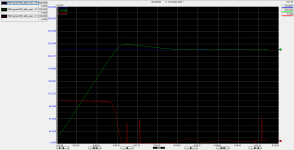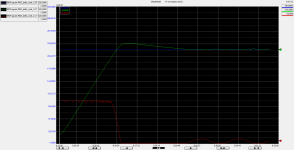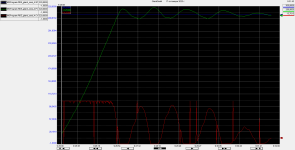KonstantinKolev
Member
Hi,
We have an ongoing project with a lot of thermocouple involved that monitor the temperature of heaters. There are more than 20 PID controllers in the system.
The controller is L33ER with WAGO EthernetIP coupler. The analog input modules on the couplers are 750-498.
There is an Add-On Instruction for the thermocouple analog input modules that are used in the controller logic.
The problem is that 4 of the thermocouple give values with extremely high amplitude i.e. let us assume that the setpoint for the PID is 300.0 degrees Celsius. When the PID is enabled and it is responsible for controlling the temperature the value from the thermocouple starts increasing with a step of 2-3 degrees Celsius. But the value from time to time becomes 300 - 500 degrees Celsius and then goes back to where it was according to the PID controller. When the value is above the setpoint, as expected, the PID shuts to control output and then when it is below, again there is 100 percent output on the PID.
Once the temperature is at steady state there no such overshoots on the temperature value.
All of the other thermocouples work fine. All of the thermocouples are type J. The 4 sensors I am talking about above are integrated in the heater itself and cannot be checked unless the heater is disassembled but the dealer sold them to us as heaters with integrated thermocouple type J.
The reason for this overshoot that we suspect is perhaps the integrated thermocouples are not of type J.
What do you think could be the reason for the behavior and is there are a way to check the type of the thermocouples without disassembling the heaters?
Best Regards
Konstantin Kolev
We have an ongoing project with a lot of thermocouple involved that monitor the temperature of heaters. There are more than 20 PID controllers in the system.
The controller is L33ER with WAGO EthernetIP coupler. The analog input modules on the couplers are 750-498.
There is an Add-On Instruction for the thermocouple analog input modules that are used in the controller logic.
The problem is that 4 of the thermocouple give values with extremely high amplitude i.e. let us assume that the setpoint for the PID is 300.0 degrees Celsius. When the PID is enabled and it is responsible for controlling the temperature the value from the thermocouple starts increasing with a step of 2-3 degrees Celsius. But the value from time to time becomes 300 - 500 degrees Celsius and then goes back to where it was according to the PID controller. When the value is above the setpoint, as expected, the PID shuts to control output and then when it is below, again there is 100 percent output on the PID.
Once the temperature is at steady state there no such overshoots on the temperature value.
All of the other thermocouples work fine. All of the thermocouples are type J. The 4 sensors I am talking about above are integrated in the heater itself and cannot be checked unless the heater is disassembled but the dealer sold them to us as heaters with integrated thermocouple type J.
The reason for this overshoot that we suspect is perhaps the integrated thermocouples are not of type J.
What do you think could be the reason for the behavior and is there are a way to check the type of the thermocouples without disassembling the heaters?
Best Regards
Konstantin Kolev










